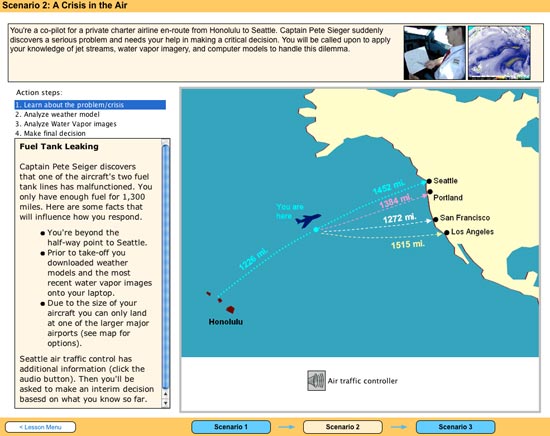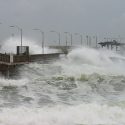Interactive animations give science students a boost
For a generation of students raised and nurtured at the computer keyboard, it seems like a no-brainer that computer-assisted learning would have a prominent role in the college science classroom.
But many difficult scientific concepts are still conveyed through dry lectures or ponderous texts. But that could change if science professors take a cue from a new study on the use of interactive animations in the college science classroom. The findings, presented here today (Dec. 14) at the fall meeting of the American Geophysical Union, show that university students who supplement their studies with interactive, game-like computer animations retain a much better understanding of a scientific concept than those who don’t.
“It works, which is a bit of a surprise,” says Steve Ackerman, a UW–Madison professor of atmospheric and oceanic sciences who led the new study. “We didn’t expect this kind of impact on the understanding of fundamental concepts.”

The screen capture above shows the Crisis in the Air challenge, which puts the student in the position of a co-pilot who needs to assess jet streams, water vapor imagery and computer models while trying to make a decision about an emergency landing.
Ackerman and UW–Madison graduate student Tim Wagner conducted the study using an introductory meteorology course of 400 students as a crucible for testing the efficacy of short animations that can demonstrate such things as tracking hurricanes and ice bergs, heat transfer, and how rain or snow form in the atmosphere.
The animations, which in actuality are small computer programs called applets, can be manipulated by students to adjust real-world variables that may come into play. For example, in the case of precipitation formation, such things as temperature or altitude can be tweaked to change rain to sleet or snow.
Seeing how the different variables come into play and how changing them can alter the type of precipitation you get is a hard demonstration of the physics of weather, says Wagner.
“Meteorological education is sometimes a little tricky,” Wagner explains. “There are not a lot of things you can demonstrate in front of the classroom.”
The animations reside on a Web site, and visits by individual students are recorded. Some animations are required for homework while others are optional. Class instructors can look at the Web site visitor data and can see which students are using the programs and for how long.
At exam time, the students who used the animations demonstrated greater mastery of concepts included on the test.
“The students who used the applets performed much better on those questions,” notes Wagner.
The new findings by Wagner and Ackerman are important because they begin to inform the use of interactive teaching materials in the science classroom and how teachers can take better advantage of their students’ deep familiarity with computers and computer games.


